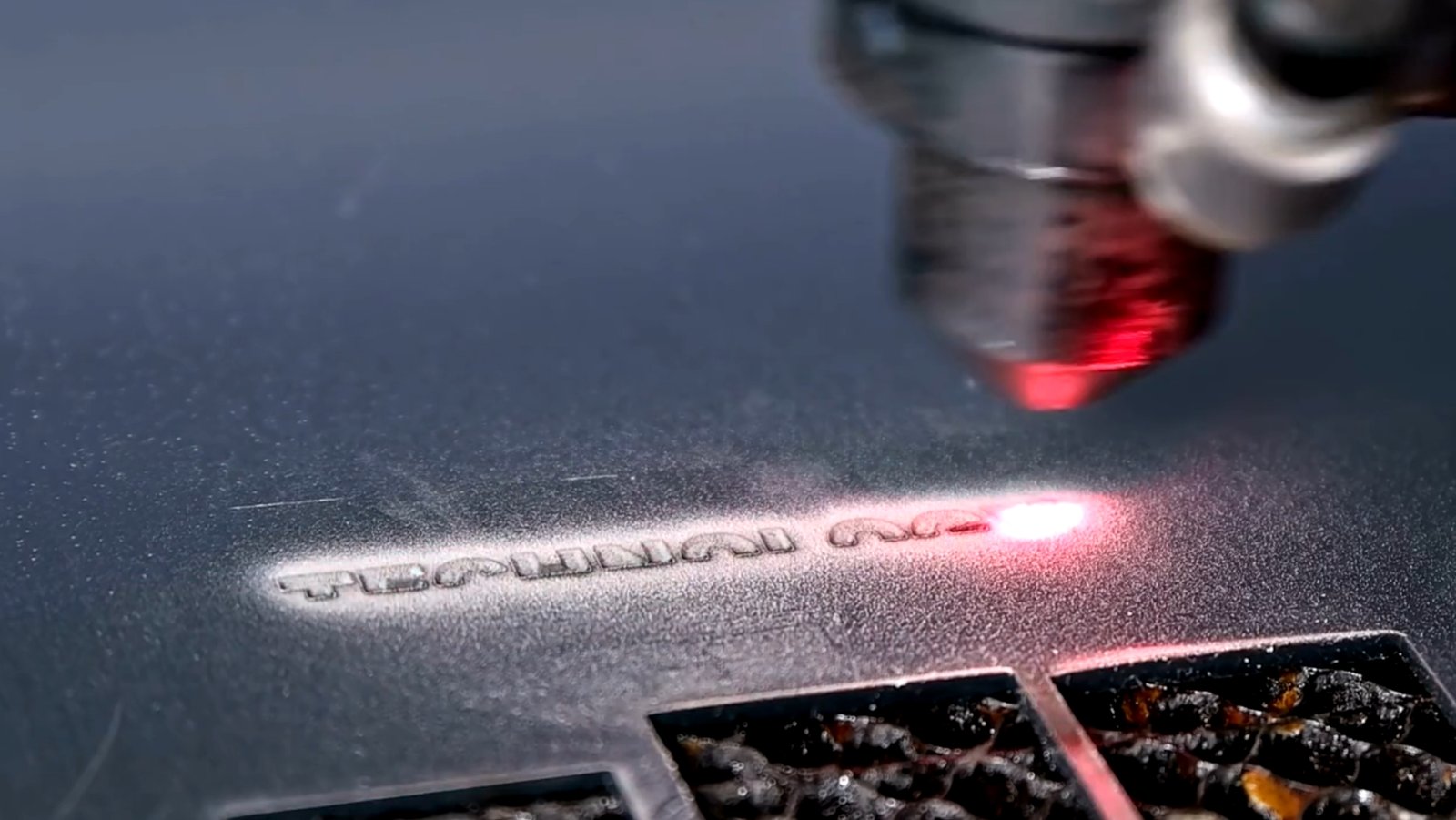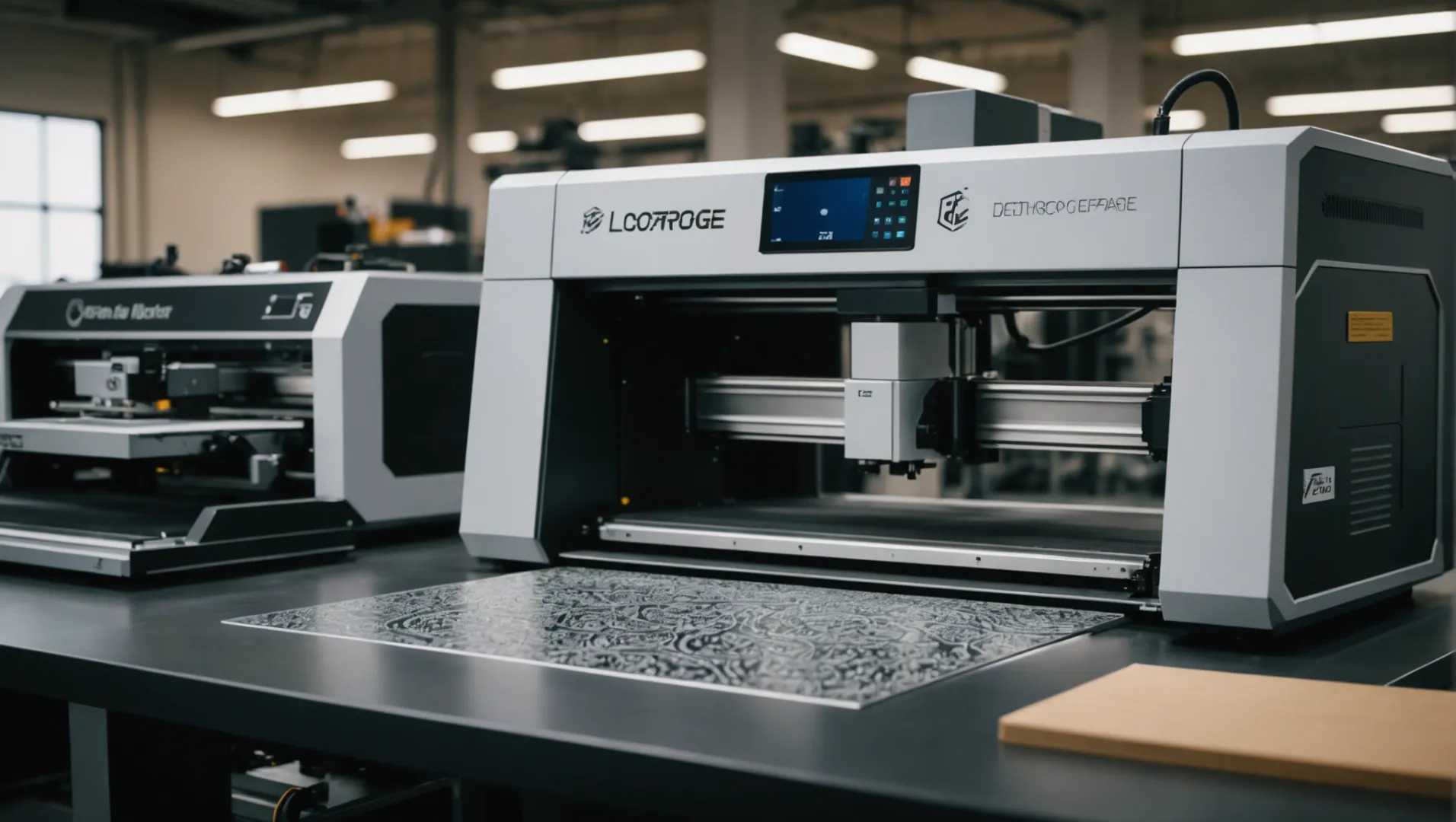
Are you ready to unleash your creativity with a laser engraver but feeling lost in the options? You’re not alone!
For metal engraving, fiber laser engravers are your best bet because they efficiently handle high-density metals, delivering unmatched precision and durability. They lead the pack in both speed and engraving quality on metal surfaces.
While fiber lasers are often the star of the show, let’s explore what makes them special and what to consider before making your investment.
Fiber lasers are best for engraving metals.True
Fiber lasers excel in metal engraving due to their precision and efficiency.
What Features Make Fiber Laser Engravers Ideal for Metal?
Fiber laser engravers are the go-to choice for metal due to their unmatched precision, speed, and durability.
Fiber laser engravers excel in metal engraving because they produce high-power, focused laser beams, ideal for marking dense metals with precision and speed. Their longevity and low maintenance needs make them cost-effective, ensuring consistent high-quality results on metal surfaces.

High-Power Laser Source
Fiber lasers are renowned for their high energy efficiency, making them suitable for engraving dense materials like metals. Their ability to generate intense heat quickly allows them to mark metals such as stainless steel, titanium, and aluminum with ease. The intense energy1 generated by fiber lasers ensures deep penetration into the material, creating clear and lasting engravings.
Precision and Speed
Fiber lasers offer incredible precision, achieved through a focused laser beam with a small spot size. This precision enables intricate designs and detailed markings without compromising on speed. Due to their fast operation, fiber lasers are ideal for high-volume production environments where time efficiency is critical.
Longevity and Low Maintenance
The design of fiber lasers includes fewer moving parts compared to other laser types, reducing the likelihood of mechanical failures. This reliability translates into less downtime and lower maintenance costs. The laser diodes in fiber engravers have a long operational life, often exceeding 100,000 hours, which contributes to their cost-effectiveness over time.
Versatility in Applications
Fiber laser engravers can handle various metals and alloys, making them versatile tools across industries such as automotive and aerospace2, where metal marking is essential. Their capability to switch between different metal types without needing significant adjustments highlights their flexibility.
Minimal Operating Costs
Compared to CO2 lasers, fiber lasers consume less power and do not require expensive gas refills. This lower energy consumption translates into reduced operating costs, making fiber lasers an economically viable option for businesses looking to optimize expenses while maintaining quality.
| Feature | Benefit |
|---|---|
| High Power | Efficient marking on dense metals |
| Precision | Detailed and intricate designs |
| Longevity | Reduced maintenance and operational costs |
| Versatility | Suitable for various metals and industrial applications |
| Minimal Operating Cost | Cost-effective with lower energy consumption |
Fiber lasers are ideal for engraving dense metals.True
Their high power and precision make them perfect for metal engraving.
Fiber lasers require frequent maintenance.False
They have fewer moving parts, reducing maintenance needs.
How Do Different Laser Types Compare in Metal Engraving?
Navigating the myriad of laser types for metal engraving can be daunting. Let’s simplify the process.
Different laser types—fiber, CO2, and UV—offer unique advantages and limitations for metal engraving. Fiber lasers excel in engraving metals due to their high precision and efficiency. In contrast, CO2 and UV lasers are less effective on metals but may offer benefits for non-metal applications.

Comparing Laser Types: Fiber, CO2, and UV
Laser engraving has revolutionized how we imprint designs onto metals. However, selecting the right laser type can significantly influence the outcome. Let’s explore how fiber, CO2, and UV lasers stack up against each other in terms of metal engraving capabilities.
Fiber Lasers: The Powerhouse for Metals
Fiber lasers are renowned for their ability to engrave metals with high precision and speed. They operate by amplifying light through optical fibers doped with rare earth elements, producing a concentrated beam ideal for metals like steel, aluminum, and titanium.
-
Advantages:
- Efficiency: Fiber lasers convert energy efficiently, reducing operational costs.
- Precision: Capable of creating detailed engravings without damaging surrounding areas.
- Durability: High-quality engravings that withstand wear and tear.
-
Limitations:
- Initial Cost: Typically higher upfront investment compared to other laser types.
CO2 Lasers: Versatile but Limited for Metals
CO2 lasers are versatile, often used for non-metal materials like wood or acrylics. They use a gas mixture to produce a laser beam that can engrave metals when enhanced with additives like marking spray.
-
Advantages:
- Versatility: Effective for a wide range of non-metal materials.
- Cost-Effective: Generally lower cost than fiber lasers.
-
Limitations:
- Metal Engraving: Requires additional treatments to engrave metals effectively, limiting direct application.
- Speed and Precision: Slower and less precise on metals compared to fiber lasers.
UV Lasers: Specialized Applications
UV lasers operate at shorter wavelengths, which makes them suitable for intricate designs on sensitive materials. While not ideal for standard metal engraving, they excel in applications requiring minimal heat impact.
-
Advantages:
- Low Heat Impact: Ideal for delicate materials or intricate designs.
- Precision: High accuracy in small-scale applications.
-
Limitations:
- Metal Engraving: Not typically used for metals due to limited penetration depth.
- Niche Applications: Best suited for specialized tasks rather than general metal engraving.
| Laser Type | Ideal Materials | Pros | Cons |
|---|---|---|---|
| Fiber | Metals | High precision, durable engravings | Higher cost |
| CO2 | Non-metals | Versatile, cost-effective | Limited metal application |
| UV | Delicate materials | Low heat impact, precise | Not ideal for metals |
Factors Influencing Choice
When choosing a laser for metal engraving, consider factors such as:
- Material Type: Metals require high precision and power, often favoring fiber lasers.
- Budget Constraints: While fiber lasers are superior for metals, CO2 lasers can be a budget-friendly alternative for certain tasks.
- Specific Applications: If your work involves detailed designs on sensitive materials, a UV laser3 might be necessary.
Understanding these distinctions ensures you select the best laser type for your specific metal engraving needs.
Fiber lasers are cost-effective for metal engraving.False
Fiber lasers have high initial costs despite their efficiency.
CO2 lasers require additives for metal engraving.True
CO2 lasers need marking sprays to effectively engrave metals.
What Are the Key Considerations When Buying a Metal Engraver?
Buying a metal engraver is a significant investment that demands careful consideration. Here’s what you need to know before making a purchase.
Key considerations when buying a metal engraver include understanding material compatibility, laser type, power requirements, speed, precision, and cost. Choose a machine that aligns with your specific needs and offers reliable support and maintenance options.

Material Compatibility
Before purchasing a metal engraver, assess the types of metals you plan to work with. Different metals have distinct properties like melting points and thermal conductivity, which influence engraving techniques. For instance, stainless steel engraving4 requires a different approach compared to softer metals like aluminum.
Laser Type Selection
Laser engravers come in various types, each suited for specific applications:
- Fiber Lasers: Ideal for metal engraving due to their high power and efficiency. They excel in marking hard materials like stainless steel and titanium.
- CO2 Lasers: Generally used for non-metal materials but can engrave coated metals.
- UV Lasers: Suitable for heat-sensitive materials, providing fine detail without causing damage.
Choose the laser type that best fits your material requirements and desired engraving outcomes.
Power Requirements and Speed
The laser power determines how deep and fast you can engrave. Higher power lasers can achieve deeper engravings but may cost more. Consider your production speed needs:
| Laser Power | Engraving Depth | Suitable Applications |
|---|---|---|
| Low | Shallow | Light markings on soft metals |
| Medium | Moderate | General-purpose engraving |
| High | Deep | Industrial-grade applications |
Precision and Focusing
Precision is crucial, especially for detailed designs or small engravings. Ensure the engraver has an accurate focusing system and stable control features to maintain high precision levels during operation.
Budget and Cost of Ownership
While initial purchase cost is important, consider the long-term costs such as maintenance, parts replacement, and potential downtime. Opt for brands offering excellent customer service5 and warranties to reduce these costs over time.
Support and Maintenance Options
Evaluate the availability of technical support and spare parts. Machines with readily available support and maintenance services can significantly reduce downtime and improve productivity. Consider brands with comprehensive training resources for operators.
By carefully considering these factors, you can choose a metal engraver that fits your specific needs and ensures efficient and effective operations.
Fiber lasers are ideal for metal engraving.True
Fiber lasers are efficient and powerful, suitable for hard metals.
CO2 lasers are best for engraving stainless steel.False
CO2 lasers are generally used for non-metal materials.
Which Brands Offer the Best Value in Metal Laser Engraving?
Selecting the right brand for metal laser engraving can be daunting. Discover which brands offer superior quality and value.
Top brands like Epilog, Trotec, and Glowforge offer excellent value for metal laser engraving by combining advanced technology, robust performance, and competitive pricing. They cater to various needs, from small businesses to industrial applications.

Evaluating Brand Value in Metal Laser Engraving
When assessing the best brands for metal laser engraving6, it’s crucial to consider factors such as technology, performance, price, and customer support.
1. Epilog Laser: Precision and Versatility
Epilog Laser is renowned for its high-quality engraving solutions. Their machines are equipped with advanced features like precision optics7 and robust laser sources, making them suitable for intricate designs and various metal types.
- Pros: Offers exceptional engraving quality, user-friendly interface, and excellent customer support.
- Cons: Higher initial investment compared to some competitors.
2. Trotec Laser: Speed and Efficiency
Trotec is another leader in laser technology, known for its efficient and fast engraving systems. Their machines excel in speed without compromising on precision.
- Pros: High-speed processing, durable construction, and extensive material compatibility.
- Cons: Can be complex for beginners due to advanced settings.
3. Glowforge: Innovation at an Affordable Price
Glowforge stands out with its innovative approach to laser engraving. Although more popular with non-metals, it offers models capable of handling metal engravings effectively.
- Pros: Affordable options, cloud-based software, and ease of use.
- Cons: Limited to certain metal types and thicknesses.
Factors to Consider When Choosing a Brand
To ensure you select the best brand for your needs, consider the following:
- Technology: Evaluate the type of laser source (fiber is preferred for metals).
- Cost: Determine your budget and compare it with the initial investment and long-term costs.
- Support: Look for brands offering reliable customer service and warranty options.
- Use Case: Match the machine’s capabilities with your specific requirements (e.g., volume of work, precision needs).
By understanding these aspects, you can make a more informed decision and choose a brand that offers not only the best value but also meets your specific metal engraving needs.
Epilog lasers are known for their precision and versatility.True
Epilog offers advanced features suitable for intricate metal designs.
Glowforge lasers are best suited for industrial metal engraving.False
Glowforge is more popular with non-metals and limited metal thicknesses.
Conclusion
Choosing the right laser engraver involves understanding both technical specifications and personal needs. Match features with your goals for a successful investment.
-
Learn about the energy efficiency of fiber lasers for metals.: Types of Lasers to Engrave Metal. While fiber lasers are ideal for metal engraving, CO2 lasers and diode lasers can also be used to create markings on metal. ↩
-
Explore how automotive sectors benefit from fiber laser use.: A fiber laser cutting machine processes automotive materials into slimmer parts using computer numerical control (CNC) technology. ↩
-
Explore UV lasers’ use in intricate, heat-sensitive applications.: Engraving of stamping or micro-erosion tools; · Marking of glass and synthetic materials for which the surface is not modified in structure or chemical … ↩
-
Explore advanced techniques for engraving stainless steel effectively.: Stainless steel engraving can be achieved by various technologies, from laser to dot-peen marking. See which one best suits your needs. ↩
-
Discover brands renowned for their excellent customer service.: Hands down go with boss laser for service and support. You can thank me later. ↩
-
Explore comprehensive reviews of Trotec’s capabilities and performance.: The interface is pretty straight forward and even allows for modifications in cutting or engraving orders. I’ve grown to rather enjoy it as, thanks to my Trotec … ↩
-
Discover how Epilog’s precision optics enhance engraving quality.: Radiance™ Beam-Enhancing Optics: Higher resolution optics for detailed engraving. Laminar Air Flow: Streamlined air flow for the most efficient smoke and … ↩



